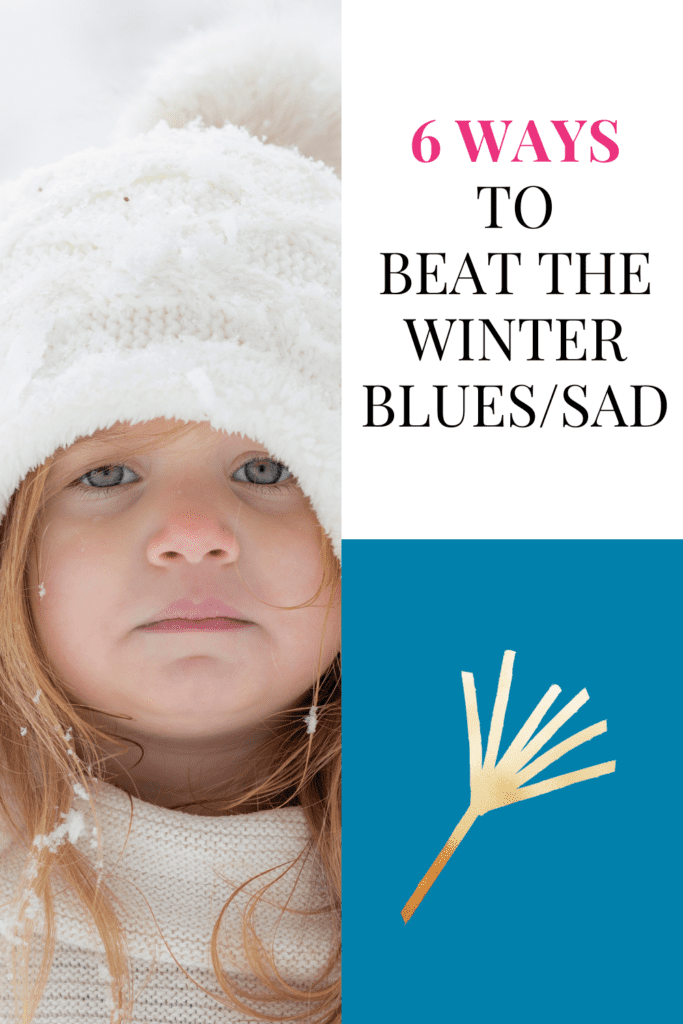I know first-hand that if momma ain’t happy, ain’t nobody happy and I was thinking the other day how many moms must be struggling more than ever this winter with seasonal affective disorder or SAD.
If you’re Canadian like me, you know that winter always requires a level of mental preparedness and resilience. This winter especially demands that of us with so much of the world dealing with COVID lockdowns, isolation and an overall tense political climate.
Creating a Resilient Nervous System
I wanted to equip moms with some resources to help keep them emotionally resilient this winter because our children are only as healthy as we are. Then it occurred to me that likely a lot of our kids struggle with Seasonal Affective Disorder as well and we don’t even recognise it because it will present differently in kids.
Maybe instead of depression, it will look like apathy at school or maybe it will present as anxiety, increased hyperactivity, moodiness, being overly-emotional or your child having poorer than usual concentration and focus.
Kids Can Get SAD Too
If the winter months affect so many of us, then surely it may account for some of our children’s struggles. In any case, below are some ways that you improve your family’s mood and mental well-being during the winter months. During these crazy times – that is more important than ever.
As you’ll see below, the best way to guard ourselves against SAD is nourishment. The minute we are depleted in the nutrients that help to make our brains work better, the more vulnerable we will be to stress, depression and mood disorders. Nourishment is much more than what’s on our dinner plate – rest, exercise, what we watch on TV and sleep are just a few other examples. But let’s talk the obvious to start – the sun.
1) The Sun and Light Therapy
It is no surprise that depression and suicide rates happen to be lowest in the sunshine belt. Unless you can afford to move South, this finding might not sound hopeful.
However, light therapy has proven to be quite helpful for many people. Making a point to go outside on a daily basis, even when it is raining or cloudy, has helped many people to better cope with the reduced sunlight during the fall and winter months.
I recently learned from Dr. Catherine Clinton that we don’t need to live in a perpetually sunny climate to mitigate the effects of SAD. Snow greatly reflects sunlight as do bodies of water, the ground or even white paint.
So even it is cloudy – get outside – you will notice a difference. If SAD is something that can really weigh you or a loved one down, buying a light box and exposing yourself to thirty minutes of light a day is optimum to manage Seasonal Affective Disorder.
Regular lights are not bright enough. Lights used for SAD are ten times stronger.
The bright light triggers nerve signals to the brain as the light passes through the eye. This causes the brain to release hormones and chemicals responsible for mood.
Essentially, the light is designed to trigger the same response in the body as the light from the sun does. Exposing yourself as soon as possible after waking seems to be most effective. Make sure you purchase your light from a reputable company. There are a lot of companies who are not selling the real deal.
2) Vitamin D
During the winter months our bodies cannot synthesize sufficient vitamin D due to the lower levels of vitamin D. Add to the fact that most of us spend most of our times indoors and it is no wonder we are so depleted in vitamin D.
Lack of sunlight keeps a part of the brain, the hypothalamus, from working properly, leading to a disruption in our natural rhythms which can result in lower levels of serotonin which keeps our mood up and higher levels of melatonin which makes us tired.
Vitamin D lowers inflammation and helps to balance melatonin and serotonin. Melatonin is the hormone that kicks in during the evening as it grows dark, making us feel tired. However, the dip in serotonin and increase in melatonin can contribute to lethargy and when other factors are in play – it can contribute to low mood and even depression.
The sunshine nutrient is known to increase our resilience to stress. War vets with PTSD compared to vets without PTSD were found to have significantly lower levels of this vitamin. Ensure you and your child are getting lots of sunshine and supplement. This is one nutrient that everyone should be supplementing because we simply do not spend enough time outside.
The part of your child’s brain – the prefrontal cortex which is responsible for those higher order processes like executive functioning which are necessary for learning and good behaviour is highly dependent on serotonin in order to function well.
3) Omega 3’s
These healthy fats can help to maintain adequate levels of the “feel good” brain chemicals (dopamine and serotonin) that increase feelings of happiness and reduce symptoms of depression.
New research even suggests that most depression is actually related to increase levels of inflammation (known as the cytokine theory of depression), and omega 3 fatty acids are one of nature’s most powerful anti-inflammatories.
Your body cannot make omega 3s so you need to supplement with fish oil or a diet rich in anti-inflammatory omegas. Start eating more of the following foods: fish, flaxseed, hemp, walnuts and dark leafy greens (especially spinach), or speak to your naturopath about adding a high EPA fish oil supplement to your fall health protocol.
4) Zinc
Zinc is often known as the immunity mineral but it is also necessary for manufacturing neurotransmitters like serotonin and dopamine. When you consider how stress depletes zinc then you can see why stress also brings down our immunity and in the winter months further compromises serotonin production.
Zinc helps to increase our resilience to stress since low zinc levels have been linked to poor adrenal function which are critical for managing stress. In an adult this can lead to burnout. It is rarely considered that children have poor adrenal function which is a myth. Poor adrenal function can lead to temper tantrums, meltdowns, fits of rage and feeling over-emotional.
5) Exercise
A 2005 study out of Harvard found that a daily 35-minute walk improved symptoms of mild to moderate depression. Countless studies have reported that a 35-minute walk produces the same amount of serotonin as a medium-dose anti-depressant.
Getting outdoors to exercise is best. A 1996 study found that exercising under bright lights or outdoors had even better results. Nature sounds and individuals who regularly spent time outside were found to have significantly lower levels of stress hormones.
Both blood pressure and cortisol was lower with just spending 15 minutes in a forest. Another study also found that children who played in school yards with lots of nature as opposed to pavement also had significantly lower stress levels.
6) Supplements
When you or your child are really struggling and nutrition isn’t quite doing it, good quality supplements can make all the difference in assisting with the production of neurotransmitters and balancing these brain chemicals.
Supplements like zinc, B6, iron, magnesium, vitamin D and omega 3’s are all key to the production of neurotransmitters.
I am also a big fan of amino acids which are the building blocks of many neurotransmitters like serotonin and melatonin. Amino acids can be very specific in targeting low mood and anxiety.
Some of my favourite are L-Theanine, Trytophan, GABA and SAM-e. If you or your child is already on anti-depressants, too much serotonin production can be harmful which is why you should always consult with a trained health care specialist.
Nourishment, light exposure, exercise and rest are key to maintaining resilience during the winter months.
Wishing you and your family Health & Wholeness,
Lorraine


